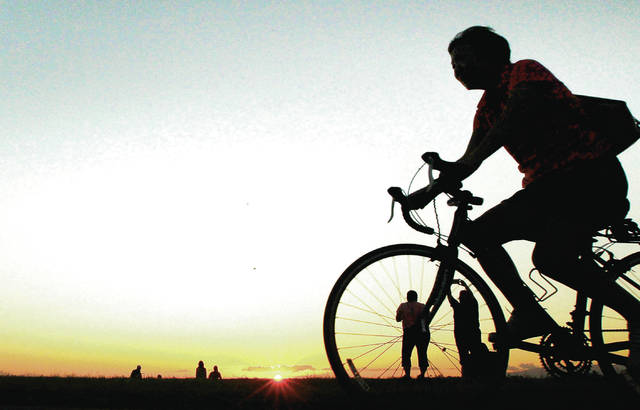Hawaii slips to second healthiest state in the nation in annual report

JAMM AQUINO / MARCH 20
People take in an orange sunset on Monday, March 20, 2017 at Ala Moana Beach Park in Honolulu.
Hawaii no longer can claim it is the healthiest state in the nation.
After five consecutive years in the No. 1 spot, the Aloha State has fallen to second place behind Massachusetts, according to the America’s Health Rankings 2017 report by the United Health Foundation. The report is in its 28th year and examines 35 measures of behaviors, community and environment, policy, clinical care and outcomes data.
Slipping one place from No. 1 doesn’t mean Hawaii — with its warm climate, clean air and abundant recreational opportunities — is suddenly an unhealthy place to live. Hawaii has been among the top six healthiest states since the rankings began in 1990, in part because of a high level of health insurance coverage, high spending on public health and a low level of tobacco use.
Still, the new rankings released Tuesday are an opportunity to examine ways the state can improve.
“We’ve always been ranked high relative to other states,” said Virginia Pressler, director of the state Department of Health. “No. 2 probably is not significantly different than No. 1, but we still have disparities where not everyone enjoys the same health as the numbers would suggest.”
The state has seen alarming increases in obesity and diabetes. An estimated 155,000 adults and children, or 1 in 9 people, had diabetes in 2016, up from 83,700 in 2012. Another 460,000 residents are prediabetic, state statistics show.
Don't miss out on what's happening!
Stay in touch with breaking news, as it happens, conveniently in your email inbox. It's FREE!
Native Hawaiians are in worse health than most other residents and more likely to suffer asthma, diabetes and obesity, as well as severe psychological stress, according to the Centers for Disease Control and Prevention. That population also has higher death rates for heart disease, diabetes and cancer compared with all other ethnicities.
Lack of physical activity and poor nutrition have resulted in more than half of adults — 57.2 percent — becoming overweight or obese, the Health Department said. Similarly, 58.5 percent have been diagnosed with at least one chronic condition. The direct health care costs for adult obesity in Hawaii are estimated at $470 million and an additional $770 million for diabetes, according to the DOH.
The national report shows that between 2016 and 2017, drug deaths rose to 11.5 per 100,000 residents from 11.2; cardiovascular mortality increased to 210.7 per 100,000 residents from 206.6; and obesity, a condition that often leads to chronic diseases, climbed to 23.8 percent of adults from 22.7 percent.
The Health Department said it is focusing on more physical activity in the community, better nutrition and tobacco control, the three major factors in overall health.
“There’s lots of different things we’re doing to try to get the community engaged to improve physical activity and nutrition,” Pressler said. “Schools have gotten rid of fried food and vending machines with sodas. We have school-based programs for fitness and we’re working with the business community on wellness programs.”
However, other challenges the state is facing include excessive drinking, a high incidence of salmonella, and lower immunization for pertussis and tetanus among adolescents, the national report shows.
And over the past three years, cardiovascular deaths rose to 210.7 deaths per 100,000 residents from 199.1, while violent crime increased 29 percent to 309 offenses per 100,000 residents from 293 offenses.
The state has made progress in other areas, including adult smoking, which fell to 13.1 percent from 14.1 percent, and the uninsured population, which decreased to 3.8 percent from 4.7 percent.
“It’s fantastic we’re still in the top tier, but we have to address our health disparities because a lot of Hawaii citizens, especially our Hawaiian community, have not seen the same health success story,” said Sen. Josh Green (D, Kona-Kau), a Hawaii island emergency doctor. “The crisis I see is in areas where people are living in poverty or without mental health care. The average lifespan for a homeless individual is just 51 years as compared to almost 80 for the rest of the state.”




